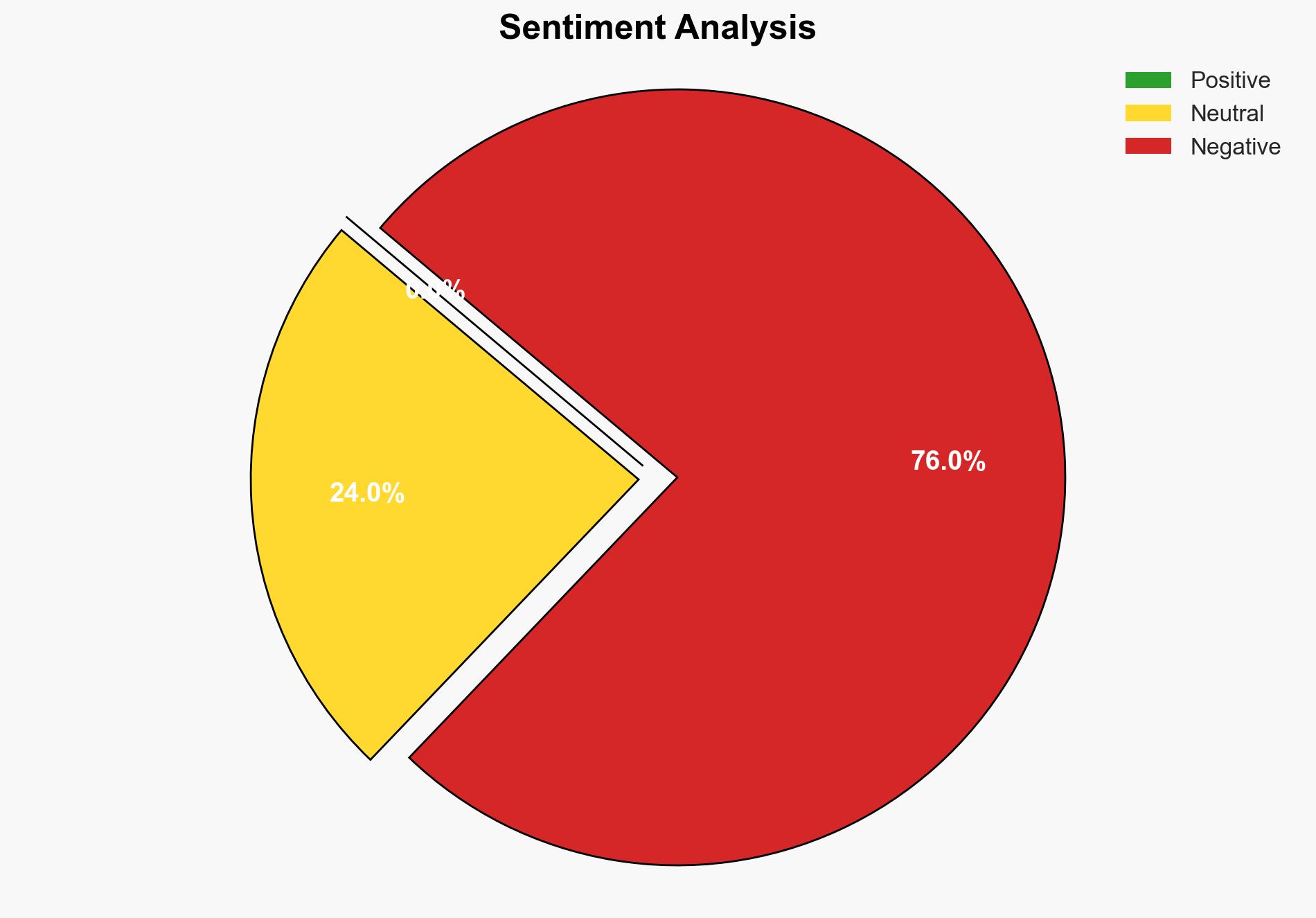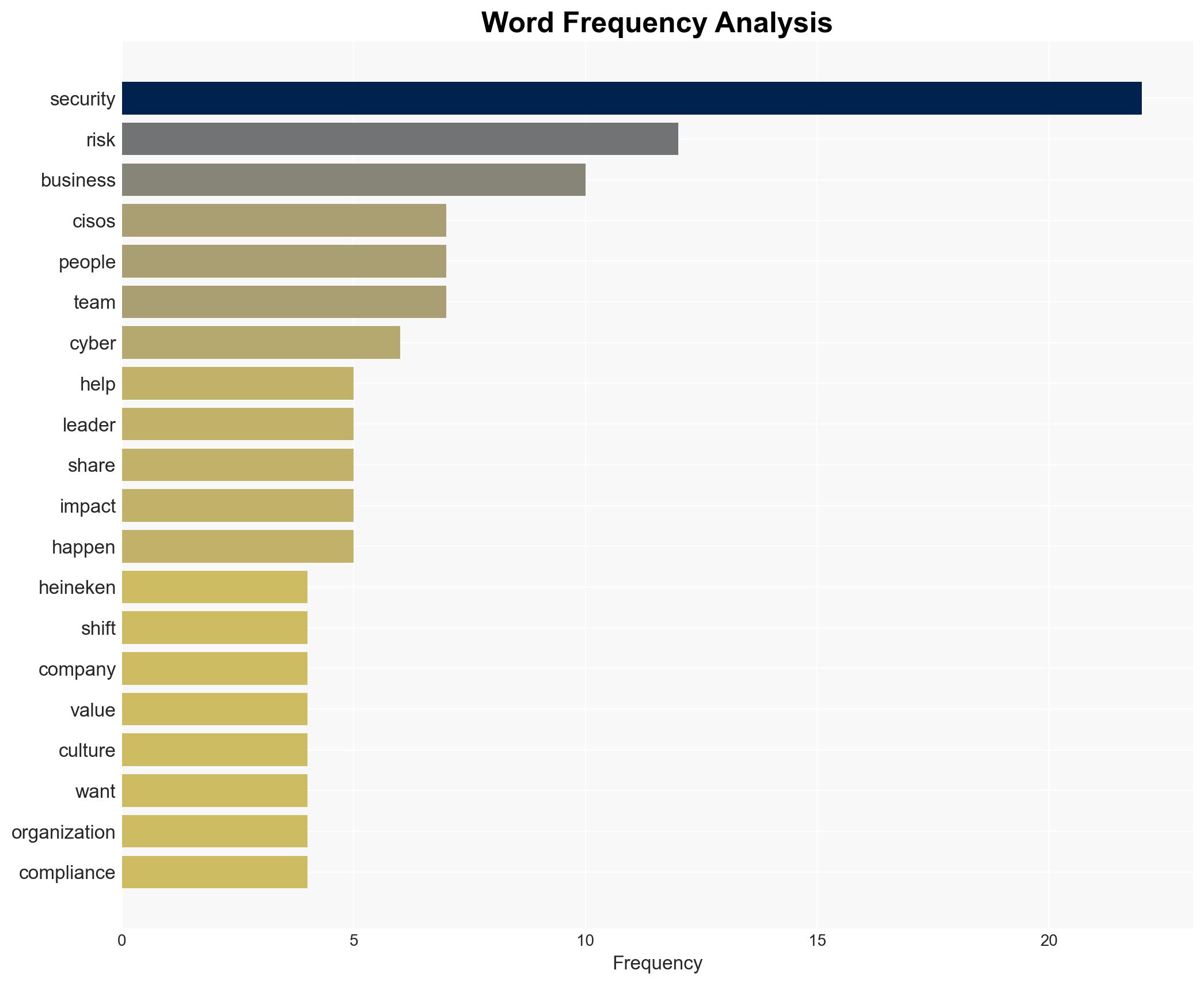Heineken’s CISO advocates for a transformative risk approach to foster innovation and enhance security alignm…
Published on: 2025-11-26
AI-powered OSINT brief from verified open sources. Automated NLP signal extraction with human verification. See our Methodology and Why WorldWideWatchers.
Intelligence Report:
1. BLUF (Bottom Line Up Front)
The strategic judgment is that Heineken’s CISO, Marina Marceta, is effectively advocating for a new risk mindset that aligns cybersecurity with business innovation, which is likely to enhance the company’s competitive edge. The most supported hypothesis is that this shift will foster a more resilient and innovative organizational culture. Confidence level: High. Recommended action: Heineken should continue to integrate cybersecurity into its business strategy, emphasizing flexibility and local adaptation.
2. Competing Hypotheses
Hypothesis 1: The new risk mindset championed by Heineken’s CISO will successfully integrate cybersecurity with business innovation, leading to enhanced competitiveness and resilience.
Hypothesis 2: The shift in risk mindset may face resistance due to entrenched classical security doctrines, potentially hindering its full integration and effectiveness.
Hypothesis 1 is more likely because the CISO’s approach aligns with broader industry trends towards integrating cybersecurity with business objectives. The emphasis on storytelling and real-world examples to communicate risk also suggests a practical and relatable strategy that is likely to resonate with stakeholders.
3. Key Assumptions and Red Flags
Assumptions: It is assumed that Heineken’s leadership supports the CISO’s new risk mindset and that the organizational culture is open to change. Additionally, it is assumed that local markets will have the capacity to adapt global principles effectively.
Red Flags: Potential resistance from stakeholders accustomed to traditional security approaches. Lack of clear metrics to measure the success of the new mindset could undermine its credibility.
4. Implications and Strategic Risks
The integration of cybersecurity with business innovation could lead to increased resilience against cyber threats and a stronger market position. However, failure to effectively implement this mindset could result in fragmented security practices and increased vulnerability. Politically, this approach could set a precedent for other multinational corporations, influencing industry standards. Economically, successful integration could lead to cost savings and increased revenue through enhanced brand reputation.
5. Recommendations and Outlook
- Actionable steps: Heineken should establish clear metrics to evaluate the success of the new risk mindset and ensure continuous communication between cybersecurity and business units.
- Best scenario: The new mindset leads to a robust, innovative culture that enhances Heineken’s market position.
- Worst scenario: Resistance to change results in fragmented security practices and increased risk exposure.
- Most-likely scenario: Gradual adoption of the new mindset with varying levels of success across different regions.
6. Key Individuals and Entities
Marina Marceta, CISO of Heineken.
7. Thematic Tags
Structured Analytic Techniques Applied
- Adversarial Threat Simulation: Model and simulate actions of cyber adversaries to anticipate vulnerabilities and improve resilience.
- Indicators Development: Detect and monitor behavioral or technical anomalies across systems for early threat detection.
- Bayesian Scenario Modeling: Quantify uncertainty and predict cyberattack pathways using probabilistic inference.
Explore more:
Cybersecurity Briefs ·
Daily Summary ·
Support us





